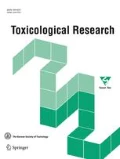Abstract
Cosmetics, especially rinse-off personal care products (PCPs), such as shampoo, facial cleanser, and body wash, are composed of various chemicals and are one of the sources of chemicals released into aquatic ecosystems. Therefore, the cosmetic industry strives to reduce the impact of their products on the aquatic environment. In this study, we proposed an algorithm based on persistence, bioaccumulation potential, and toxicity (PBT) for the environmental risk assessment of cosmetics. PBT features are generally used in the evaluation of the environmental impact of chemicals. Based on the PBT assessment, it is possible to predict the short- and long-term effects of chemicals on the environment. Our algorithm derives substance and product scores from PBT features, allowing for the risk assessment of each ingredient in the product. Furthermore, we proposed a criterion for the environmental impact grade through which each component can be classified. We intend to use this grade and factors determined through the algorithm to manufacture products with low environmental impact.


Similar content being viewed by others
Notes
S stands for Substance. Score(S) refers to the substance score.
P stands for Product. Score(P) refers to the product score.
‘S in P’ stands for Substance in product. Score(S in P) refers to the substance score in product.
References
Boxall AB, Fogg LA, Blackwell PA, Kay P, Pemberton EJ, Croxford A (2004) Veterinary medicines in the environment. Rev Environ Contam Toxicol 180:1–91. https://doi.org/10.1007/0-387-21729-0_1
Kim JW et al (2008) Acute toxicity of pharmaceutical and personal care products on freshwater crustacean (Thamnocephalus platyurus) and fish (Oryzias latipes). J Toxicol Sci Jpn 34:227–232. https://doi.org/10.2131/jts.34.227
Schneider SL, Lim HW (2019) Review of environmental effects of oxybenzone and other sunscreen active ingredients. J Am Acad Dermatol 80:266–271. https://doi.org/10.1016/j.jaad.2018.06.033
EU (2018) COMMISSION REGULATION (EU) 2018/35. https://eur-lex.europa.eu/legal-content/EN/TXT/PDF/?uri=CELEX:32018R0035&from=EN. Accessed 21 Mar 2022
Vita NA, Brohem CA, Canavez ADPM, Oliveira CFS, Kruger O, Lorencini M, Carvalho CM (2018) Parameters for assessing the aquatic environmental impact of cosmetic products. Toxicol Lett 287:70–82. https://doi.org/10.1016/j.toxlet.2018.01.015
L’Haridon J, Martz P, Cheneble JC, Campion JF, Colobe L (2018) Ecodesign of cosmetic formulae: methodology and application. Int J Cosmet Sci 40:165–177. https://doi.org/10.1111/ics.12448
Saxe JK, Predale RA, Sharples R (2018) Reducing the environmental risks of formulated personal care products using an end-of-life scoring and ranking system for ingredients: method and case studies. J Clean Prod 180:263–271. https://doi.org/10.1016/j.jclepro.2018.01.140
Strempel S, Scheringer M, Carla A, Ng, Hungerbühler K (2012) Screening for PBT chemicals among the ‘existing’ and ‘new’ chemicals of the EU. Environ Sci Technol 46:5680–5687. https://doi.org/10.1021/es3002713
Cassani S, Gramatica P (2015) Identification of potential PBT behavior of personal care products by structural approaches. Sustain Chem Pharm 1:19–27. https://doi.org/10.1016/j.scp.2015.10.002
EU (2006) REGULATION (EC) No 1907/2006 OF THE EUROPEAN PARLIAMENT AND OF THE COUNCIL. https://eur-lex.europa.eu/LexUriServ/LexUriServ.do?uri=OJ:L:2007:136:0003:0280:en:PDF. Accessed 21 Mar 2022
US EPA (2012) Sustainable Futures / P2 Framework Manual. EPA-748-B12-001. https://www.epa.gov/sustainable-futures/sustainable-futures-p2-framework-manual. Accessed 21 Mar 2022
Snyder EM, Snyder SA, Giesy JP et al (2000) SCRAM: a scoring and ranking system for persistent, bioaccumulative, and toxic substances for the North American Great Lakes. Environ Sci & Pollut Res 7:176–184. https://doi.org/10.1065/espr199910.011
Schoorl M, Hollander A, van de Meent D (2015) SimpleBox 4.0: A multimedia mass balance model for evaluating the fate of chemical substances. https://www.rivm.nl/bibliotheek/rapporten/2015-0161.html. Accessed 21 Mar 2022
Ribeiro AS, Estanqueiro M, Oliveira M, Sousa Lobo JM (2015) Main benefits and applicability of plant extracts in skin care products. Cosmetics 2:48–65. https://doi.org/10.3390/cosmetics2020048
ECHA (2017) Chapter R.11. PBT/vPvB assessment, Guidance on Information Requirements and Chemical Safety Assessment. https://echa.europa.eu/documents/10162/13632/information_requirements_r11_en.pdf/a8cce23f-a65a-46d2-ac68-92fee1f9e54f. Accessed 21 Mar 2022
National Institute of Environmental Research(NIER) (2020) Notification 2020-8 ‘Regulations on Classification, Labelling, etc. of Chemicals’. https://chem.safety.or.kr/bbs/board.php?bo_table=data&wr_id=68. Accessed 21 Mar 2022
Kienzler A, Bopp S, Halder M, Embry M, Worth A (2019) Application of new statistical distribution approaches for environmental mixture risk assessment: a case study. Sci Total Environ 693:133510. https://doi.org/10.1016/j.scitotenv.2019.07.316
Belanger SE, Beasley A, Brill JL, Krailler J, Connors KA, Carr GJ, Embry M, Barron MG, Otter R, Kienzler A (2021) Comparisons of PNEC derivation logic flows under example regulatory schemes and implications for ecoTTC. Regul Toxicol Pharmacol 123:104933. https://doi.org/10.1016/j.yrtph.2021.104933
Funding
The authors have not disclosed any funding.
Author information
Authors and Affiliations
Corresponding author
Ethics declarations
Conflict of interest
The authors have no conflict of interest to disclose.
Additional information
Publisher’s Note
Springer Nature remains neutral with regard to jurisdictional claims in published maps and institutional affiliations.
Rights and permissions
About this article
Cite this article
Choi, MS., Kim, S., Lee, S.E. et al. Algorithm for environmental risk assessment of cosmetics to reduce their environmental impact. Toxicol Res. 39, 15–24 (2023). https://doi.org/10.1007/s43188-022-00143-3
Received:
Revised:
Accepted:
Published:
Issue Date:
DOI: https://doi.org/10.1007/s43188-022-00143-3




